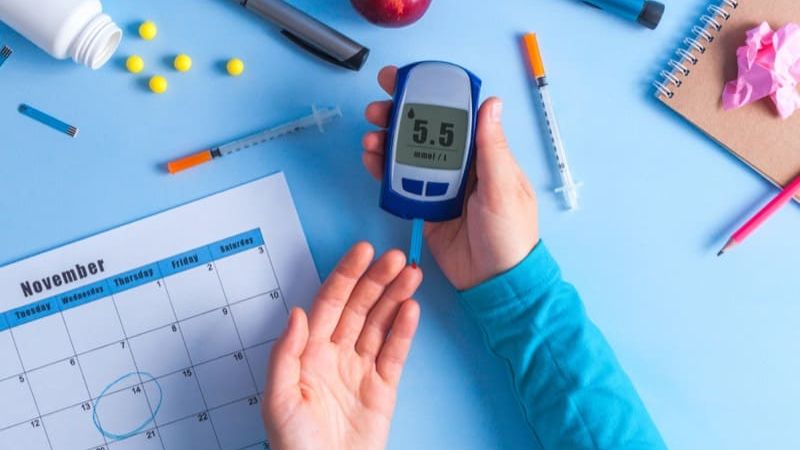

Our Review Process
Our articles undergo extensive medical review by board-certified practitioners to confirm that all factual inferences with respect to medical conditions, symptoms, treatments, and protocols are legitimate, canonical, and adhere to current guidelines and the latest discoveries. Read more.
Our Editorial Team
Shifa Fatima, MSc.
Author
Dr. Apoorva T, MHM.
MEDICAL ADVISOR
Factors That Impact Adherence to SMBG Practices
Adherence is defined by the WHO as the extent to which a person’s behaviour towards taking medication, following a diet and/or executing lifestyle changes corresponds with agreed recommendations from a health care provider. Adherence to SMBG therefore requires testing of blood sugar as advised by the healthcare provider, in terms of frequency and timing.
Self-Monitoring of Blood Glucose (SMBG) is a useful technique to gain glycemic control in people with diabetes. It is a critical tool that can assist people with high blood sugar levels in several different ways, including the following-
- Understand the outcomes of their diet and lifestyle on their blood glucose levels.
- Make healthy lifestyle and food choices.
- Provide clear pictures to doctors and patients regarding the efficacy of the treatments.
- Provide the right directions in light of the necessary steps in attaining and maintaining glycemic control.
However, despite the immense benefits of self-monitoring, adherence to SMBG's recommended patterns and cycles is inconsistent and deficient in many people with diabetes. According to the International Diabetes Federation (IDF), self-monitoring of blood glucose should be practiced only when people with diabetes, healthcare service providers, or caregivers are knowledgeable enough to include it and associated treatment adjustments into their diabetes management plan. It will help them achieve the objectives of their treatments. To leverage the best advantages of 'Self-Monitoring of Blood Glucose', the degree of execution of the SMBG needs to be personalized. Plus, it should be informative for both parties and focus on motivating self-efficacy in patients.
Self-efficacy as a construct in adherence to prescribed medication, recommended diet required, adequate exercise, stress management along with knowledge and social support. There is an interaction between the Behavioural, Personal, and Environmental factors in the management of Diabetes. A host of studies have recognized the factors that influence the frequency of self-monitoring of blood glucose. which show that people with certain specific characteristics have a reduced tendency to perform SMBG daily. Also know about random blood sugar normal range.
For easy understanding of the factors influencing the adherence to SMBG, it is important for one to know the basic concepts of SMBG and the conceptual framework showing the relationship between the independent, dependent and intervening variables that will form the core discussion for adherence issues. Read more about gestational diabetes counseling.
Table of Contents
Variable Factors that influence SMBG adherence.
1. Independent Variables
Knowledge, Attitude and Practice
- Lack of Knowledge
- Poor Attitude
- Poor Practices
- Cultural Subscriptions
- Levels of Literacy
Demographic Characteristics
- Age
- Gender
- Education levels
- Family Income Levels & Cost of medications
Lifestyle
- Dietary
- Physical activity
- Alcohol, drugs and substances abuse
- Obesity
2. Dependent Variables
Compliance to -
- Nutrition
- Pharmacological treatment
- Physical activity
3. Intervening Variables
Psychological Factors
- Low self-confidence and competence
- High level of stress, depression, and anxiety
- The preconceived notion about the painfulness associated with SMBG
Environmental Factors
- Inconveniences associated with SMBG
- Lack of support
- Lack of involvement of family members
- Government policies
- Marital status
- Comorbidity
Motivational interviewing and SMBG
Motivational interviewing is a critical approach that is provider-led and user oriented. It helps enhance the inherent motivation for health behaviour modification in individuals. It does so by letting them explore and troubleshoot the doubts they have about such alterations. This approach comprises data-based communication techniques that aim to generate quick and intrinsically encouraged developments in various health behaviour methods. Although the motivational interviewing approach has been used in short clinical meetings, it can also be used for SMBG utilization.
Principles of Motivational Interviewing
Many basic motivational interviewing strategies encourage self-created health behaviour change and strengthen adherence to self-monitoring of blood sugar. It includes the following:
- Help Bridge the Gap : The first principle focuses on the provider's ability to help you explore and bridge the gap between your existing diabetes care practices and health goals.
- Clarifying Doubts : The second principle supports that many people have doubts about carrying out health behaviour modifications and advocate provider- user encounters to explore why a given person is doubtful about making the change. So, when providers allow you to talk about how you feel about sticking to SMBG and the related issues, it can positively change your behaviour.
- Promoting Self-sufficiency : This third principle promotes the interactions between provider and user to instill and strengthen minds to attain realistic goals concerning health-behaviour modifications.
- Being Understanding, Not Judgmental : The fourth principle shows that the motivational interviewing strategy is non-judgmental. It utilizes thoughtful listening to understand how you feel and think with no room for judgment and responsibility.
- Understanding Resistance : Resistant behaviour is mainly associated with how both parties are communicating or interacting. It often indicates that the providers and users are probably not on the same page. It can also mean that providers are urging users to go beyond their threshold. However, instead of considering resistance as an issue, we can see it as an indication that it is time to change how we communicate.

Bottomline
SMBG numbers, when recorded and shared with your health care professional, can help determine the effectiveness of a treatment plan, including how well medications, meal planning, and activities are helping to control blood glucose, when planning to adjust the treatment plan for improved results.
SMBG gives the provider and user a more detailed view of daily blood glucose numbers and identify hyperglycemic and hypoglycemic activity. More frequent SMBG practice more than 3 times is seen to be associated with better glycemic control and better quality of life. Motivational Interviewing, counselling, education, encouragement and other psychological support by the provider is the key to achieve adherence with the SMBG routine and improve your quality of life. Also know about sugar measuring machine.
FAQs
1. How to use SMBG?
Using the technique of self-monitoring of blood glucose is important for a person with diabetes. It is simple to use these days and anyone, old or young, can quickly learn the process. Essentially, one would have to purchase the glucometer to use and test their blood sugars at home. Purchase one from a reliable and approved brand. Along with the glucometer, the testing strips will be available. Make sure that there is a pricker with the set and enough lancets (microneedles that are attached to the pricker to poke the skin). Once the battery is inserted, all you will have to do is insert one test strip into the space in the glucometer and prick your finger to draw some blood. Place the blood drop on the test strip which will then give you the result within 5-10 seconds. Dispose of the used test strip and wash your hands.
2. Who should use SMBG?
A person with any type of diabetes – type 1, type 2, gestational, and even prediabetes should use SMBG. This will help to understand how much the blood sugar levels are under control and if they aren’t, what the next steps would be. In case of a high blood sugar reading, one can take a correction bolus dose. Similarly, SMBG will help detect low blood sugars that need to be corrected immediately, especially if they are below 70 mg/dL
3. What is better - SMBG or CGM?
Both of these techniques come with their advantages. In India, since diabetes supplies are not covered under insurance, a CGM device can get expensive for many. However, it is recommended that one uses a CGM device, especially someone with type 1 diabetes, at least twice a year so that they are able to understand how their bodies and blood sugars are reacting to food. An SMBG, however, is a compulsion for anyone and everyone with diabetes to have on them all the time to be able to check their sugar levels at any time, randomly, or even if they are feeling unwell.
References
- https://www.ncbi.nlm.nih.gov/pmc/articles/PMC6507072/
Disclaimer
This website's content is provided only for educational reasons and is not meant to be a replacement for professional medical advice. Due to individual differences, the reader should contact their physician to decide whether the material is applicable to their case.
More by Shifa Fathima

अर्जुनरिष्ट: फायदे, खुराक, नुकसान | पढ़ें | Sugar.fit

मधुमेह के लिए मधुनाशिनी वटी: उपयोग, लाभ, खुराक और दुष्प्रभाव|

मधुमेह को नियंत्रित करें भारतीय आहार से





